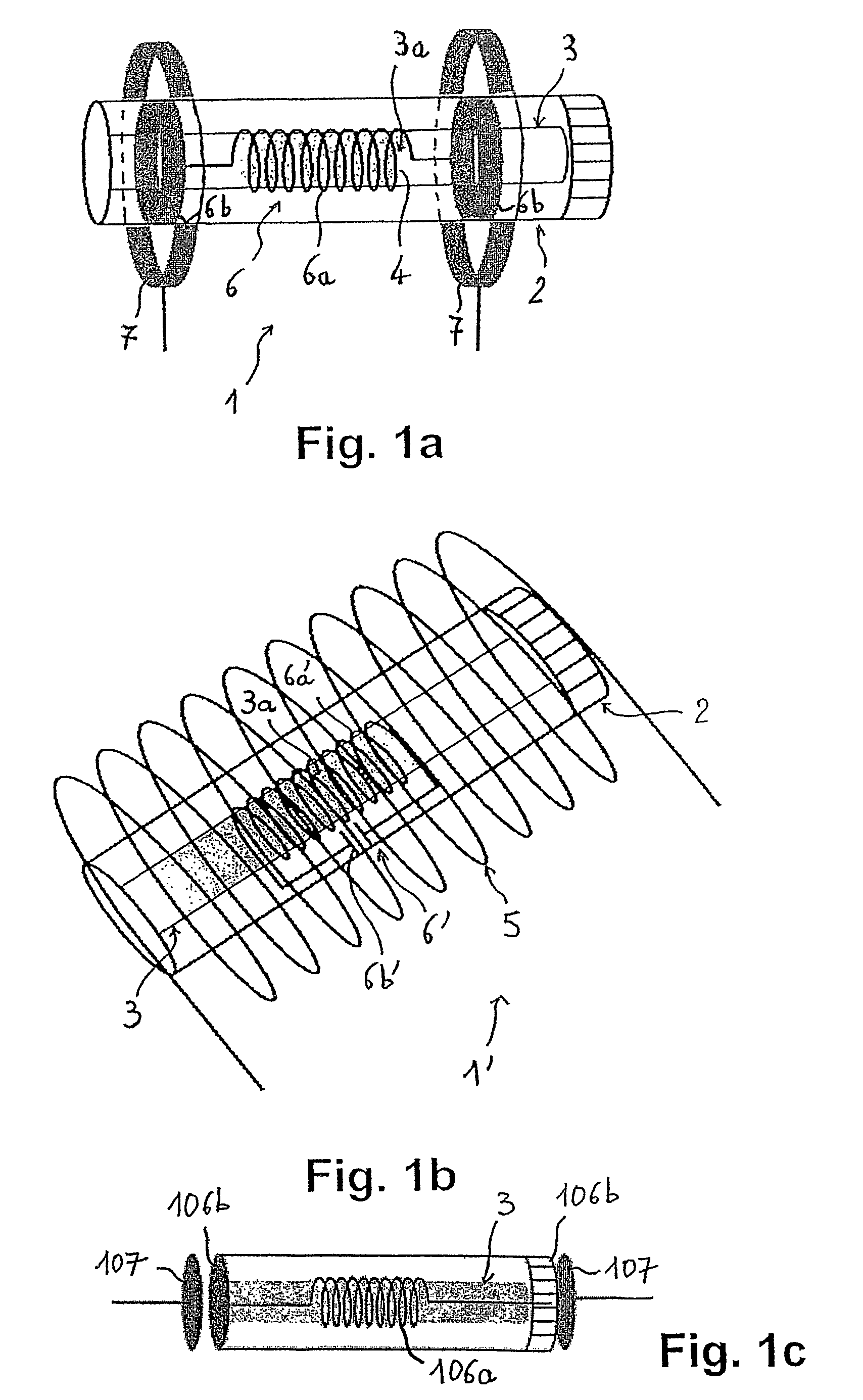Apparatus for high-resolution NMR spectroscopy and/or imaging with an improved filling factor and RF field amplitude
a technology of rf field amplitude and filling factor, applied in the field of apparatus for high-resolution nmr spectroscopy and/or imaging, can solve the problems of poor filling factor, reduced sensitivity, and difficult rotation of small (sub-millimeter) objects at very fast speed, and achieve the effect of maximizing the radio frequency field amplitud
- Summary
- Abstract
- Description
- Claims
- Application Information
AI Technical Summary
Benefits of technology
Problems solved by technology
Method used
Image
Examples
Embodiment Construction
[0117]The high-resolution NMR apparatuses 1 and 1′ respectively shown in FIGS. 1a, 2a and 1b, 2b each essentially comprise a rotor 2 in which is embedded a capillary 3 comprising a sampling volume 3a which is designed to be filled by a sample 4 (the rotor 2 thus forming a spinning sample holder) and to be subjected to an electromagnetic RF field during the rotation of the sample 4, by means of:[0118]a static probe comprising a usual antenna-containing energizing circuit for excitation of nuclei of the sample 4 (the static probe and its energizing circuit are not shown in their entirety), the energizing circuit (not shown on these drawings) surrounding the rotor 2 and being designed to generate the RF field, and[0119]a resonant circuit 6′ or a circuit 6 which is matched with surrounding circuits to exhibit a resonance, for detection of the precession frequencies of the nuclei, this circuit 6, 6′ being electromagnetically coupled (i.e. by a wireless connection) to the energizing circu...
PUM
 Login to View More
Login to View More Abstract
Description
Claims
Application Information
 Login to View More
Login to View More - R&D
- Intellectual Property
- Life Sciences
- Materials
- Tech Scout
- Unparalleled Data Quality
- Higher Quality Content
- 60% Fewer Hallucinations
Browse by: Latest US Patents, China's latest patents, Technical Efficacy Thesaurus, Application Domain, Technology Topic, Popular Technical Reports.
© 2025 PatSnap. All rights reserved.Legal|Privacy policy|Modern Slavery Act Transparency Statement|Sitemap|About US| Contact US: help@patsnap.com



